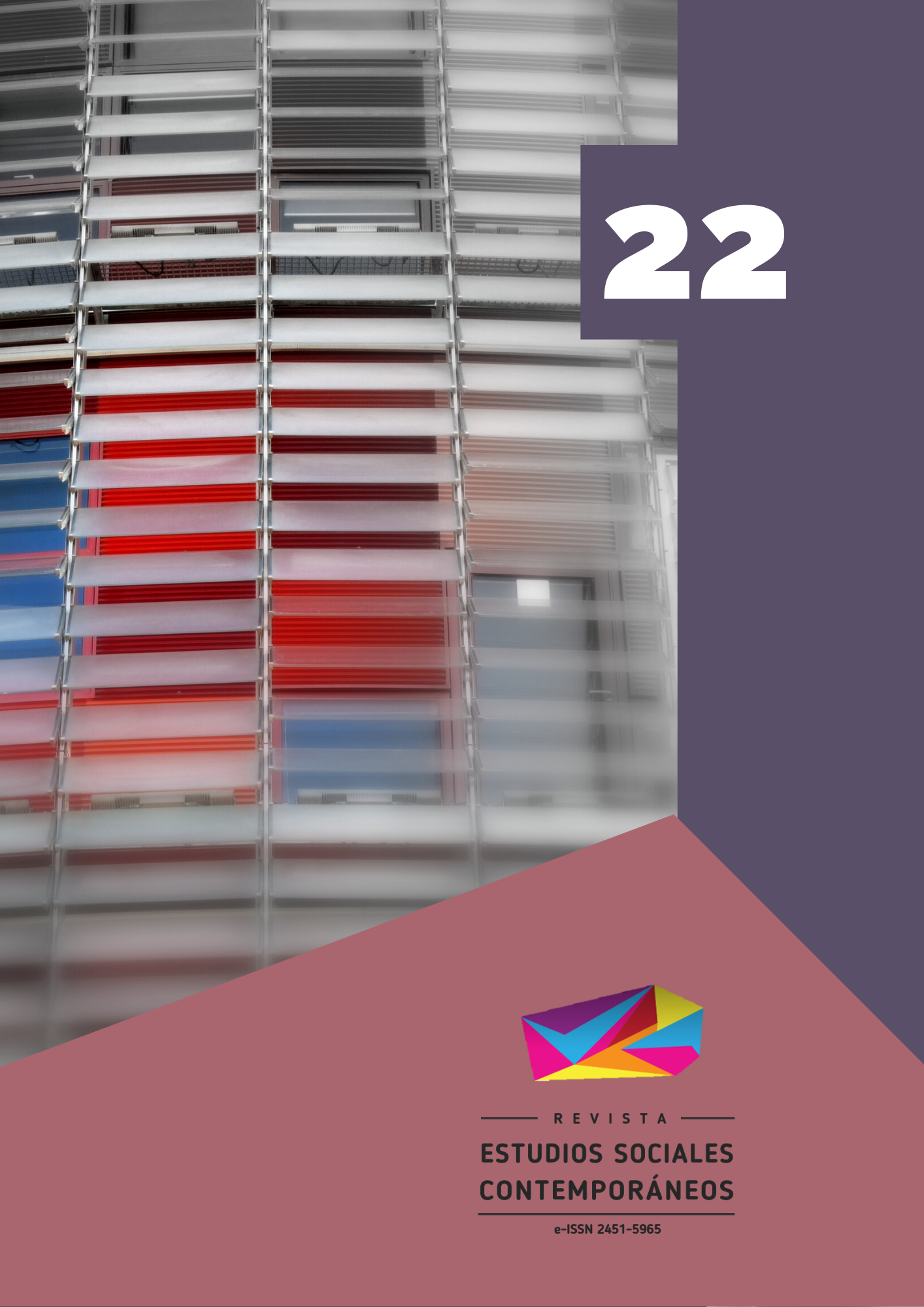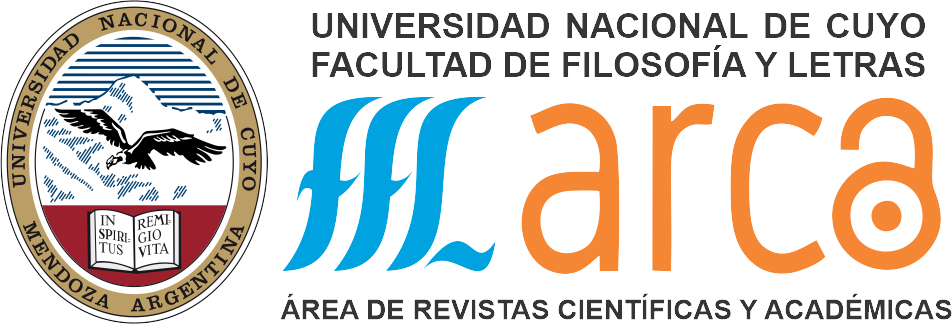The ‘Fiesta Nacional de la Vendimia’ (Mendoza, Argentine):intangible heritage.
Historiographical approach from public history
Keywords:
Harvest- Mendoza- culture- identityAbstract
Indeed, the community of Mendoza enjoys the National Harvest Festival since 1936, when it was institutionalized by a Decree of Governor Guillermo Cano. From there and except on rare occasions, the celebration is held between the end of February and March, each year. However, in the decade of ’10, a provincial deputy presented to the Legislature a project to carry out Fiesta but did not prosper. It was used in 1913 on the occasion of receiving and entertaining the government delegation that visited Mendoza on the occasion of the Congress of Commerce. The way in which that party was organized and the great influx of the public places this event in the direct antecedent of the institutionalized party.
The interest is centered in the first place, in making a description of some constituent elements of the historiographic perspective of the New cultural history and the Public History approach; secondly, to address the harvest stories as harvest festivals from two well-defined aspects: as intangible cultural heritage and as a space for identity construction; Finally, to examine this enriching confluence with the specific purpose of identifying and describing the constituent elements of these approaches by applying them to the historiographic approach of the representations in some harvest festivals in the province of Mendoza.
References
AGUDO, Juan (2009). “De rituales festivo-ceremoniales a patrimonio intangible. Nuevas recreaciones de viejas tradiciones”. En: Isadora de Norden,. Fiestas y rituales, pp. 51-67.
ALI-KNIGHT, Jane et al. (edit.) (2009). International Perspectives of Festivals and Events. Paradigms of Analysis.London: Elsevier.
BELEJ, Cecilia et al. (2005). La más bella de los viñedos: trabajo y producción en los festejos mendocinos. En: Lobato, Mirta Z. Cuando las mujeres reinaban: belleza, virtud y poder en la Argentina del siglo XX. Buenos Aires: Biblos.
BOHOSLAVSKY, Ernesto y SOPRANO, Germán (2010). “Una evaluación y propuestas para el estudio del Estado en la Argentina”. En: E. Bohoslavsky y G. Soprano (eds.). Un Estado con rostro humano. Funcionarios e instituciones estatales en la Argentina (desde 1880 a la actualidad).Buenos Aires: Universidad Nacional de General Sarmiento / Prometeo Libros.
BURKE, Peter (2000). Formas de Historia Cultural. Madrid: Alianza.
CHARTIER, Roger (1995). Sociedad y Cultura en la Edad Moderna. La cultura como apropiación.México: Instituto Mora.
CHICANGANA BAYONA, YOBENJ AUCARDO (2009). Debates de la historia cultural, conversación con el profesor Peter Burke. historia critica No. 37, Bogotá, enero-abril 2009, 252 pp. issn 0121-1617 pp 18-25
CHIARAMONTE, José C. (2013). Usos políticos de la historia. Lenguaje de clases y revisionismo histórico. Buenos Aires: Sudamericana.-
DA SILVA SOARES, Fagno; Marta GOUVEIA DE OLIVEIRA ROVAI, Francisco Rebouças Porto (2017) “Por uma história pública: comunicação e ensino”. Revista Observatório. v. 3 n. 2, Abr-Jun. 25-40 pp.-
ESCOLAR, Diego (2007). Los dones étnicos de la nación. Buenos Aires: Prometeo.
EUJANIAN, Alejandro; PASOLINI, Ricardo y SPINELLI, M. Estela Coord. (2015). Episodios de la Cultura Histórica Argentina. Celebraciones, Imágenes y Representaciones del pasado siglos XIX y XX.Buenos Aires: Biblos.
GIGUÈRE, Hélène (2006). “Vues anthropologiques sur le patrimoine culturel immatériel: un ancrage en base Andalousie”. Anthropologie et Sociétés, vol. 30, n° 2, pp. 107-127.
HUNT, Lynn (ed.) (1989). The New Cultural History; Essays on the History of Society and Culture. Los Angeles: University of California Disponible online: https://es.scribd.com/doc/144155027/Lynn-Hunt-the-New-Cultural-History (consultado el 05 de enero de 2016). -JENKINS, Richard (2008). Social Identity. London: Routledge.
KÖPPING, Klaus-Peter; Bernhard Leistle and Michael Rudolph (edit.) (2006). Ritual and Identity: Performative Practices as Effective Transformations of Social Reality. Berlin-New York, Verlag.
Libro de oro de la Vendimia. Mendoza, Diario Mendoza, 1986.
LIDDINGTON, Jill. (2002). “What Is Public History? Publics and Their Pasts, Meanings and Practices”. En: Oral History, Vol. 30, No. 1, Women's Narratives of Resistance (Spring),pp. 83-93.
LLOYD, Christopher (2009). “Historiographic Schools”, in: Avizer Tucker (edit.). A Companion to the Philosophy of History and Historiography. Oxford: UK, Blackwell Publishing, John Wiley & Sons, pp. 371-380.
MELO FLOREZ, Jairo Antonio. (2014) Presentación Contribución Especial: “Historia Pública”. Revista Historia 2.0 Conocimiento Histórico en Clave Digital; Año IV, Núm 8.
NORDEN, Isadora de (2009) (Dir.). Fiestas y rituales. X Encuentro para la Promoción y Difusióndel Patrimonio Inmaterial de Países Iberoamericanos. Lima, Perú. UNESCO-Instituto Nacional de Cultura del Perú-CRESPIAL.
ROY, Christian (2005). Traditional Festivals. A Multicultural Encyclopedia. California, ABC Clio.
SEVILLA, Ariel y Fabián (2016). La Vendimia para ver. Mendoza: Secretaría de Cultura, Gobierno de Mendoza.-Sevilla, Ariel. Entrevista realizada por Carla Riggio el 24 de febrero de 2018.
UNESCO (2003a). Convention pour la sauvegarde du patrimoine culturel immatériel. Paris, UNESCO, MISC/2003/CLT/CH/14. Recurso digital obtenible en link permanente: http://unesdoc.unesco.org/images/0013/001325/132540f.pdf.
VASQUEZ, María Gabriela y CAHIZA, Pablo. (2018). Fundamentos de la Historia y la Arqueología.Mendoza: Facultad de Filosofía y Letras, Universidad Nacional de Cuyo.
VASQUEZ, María Gabriela (2019). Nueva historia cultural e historia de género. Notas sobre una fecunda unión. En: Adriana García (Editora). La cultura bajo la lupa. Una visión integradora de la nueva historia cultural.Mendoza: Facultad de Filosofía y Letras, Universidad Nacional de Cuyo.
WILLIAMS, Raymond. (1981) Sociología de la cultura. Buenos Aires, Ed. Paidós.
Downloads
Published
How to Cite
Issue
Section
License
Copyright (c) 2020 Carla Andrea Riggio

This work is licensed under a Creative Commons Attribution-NonCommercial-ShareAlike 3.0 Unported License.
























